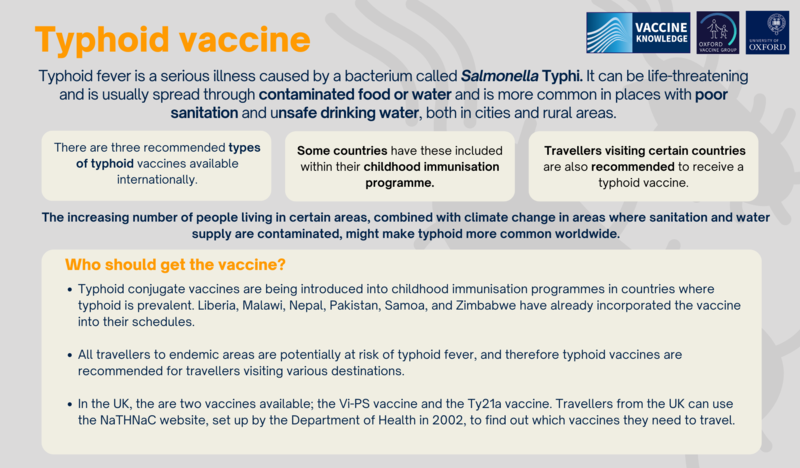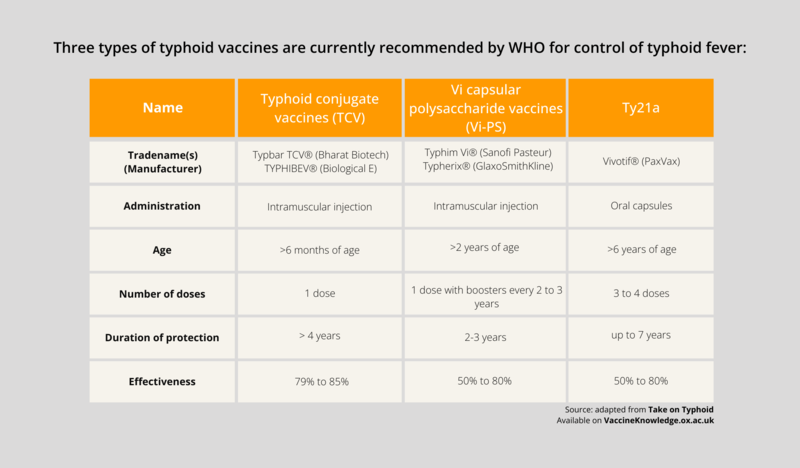Typhoid and antimicrobial resistance
Initially, the main antibiotics used to treat typhoid were chloramphenicol, ampicillin, and cotrimoxazole. But in the 1970s, resistance to these antibiotics started appearing and has since become widespread. Multi-drug resistant (MDR) typhoid is an issue globally, especially in regions like the Middle East, Africa, and Asia.
In the 1990s, a different type of antibiotic called fluoroquinolones started being used. However, because they were used so widely, resistance to them began to increase as well. Consequently, cephalosporins and azithromycin became the last resort antibiotics.
In 2016, extremely drug-resistant (XDR) typhoid strains emerged. These strains are resistant to five classes of antibiotics: chloramphenicol, ampicillin, cotrimoxazole, streptomycin, fluoroquinolones, and third-generation cephalosporins.
Azithromycin remains the only effective oral antibiotic against XDR typhoid, but resistance to it is also starting to emerge in some places. This situation is making treatment more complex and costly, leading to more hospitalisations and straining healthcare systems, highlighting the urgent need for widespread vaccination using the Typhoid Conjugate Vaccine in high-risk areas.
This would reduce the occurrence of the disease and slow down the spread of drug-resistant typhoid. Rolling out the TCV vaccine effectively could prevent two-thirds of cases and deaths.
Read more on the GAVI website
Mass typhoid fever vaccination campaigns
Mass vaccination campaigns are where entire populations are vaccinated against a particular disease. They’re often utilised in times of disease outbreak, for example, during the COVID-19 pandemic. Mass vaccination against typhoid fever has been used in various countries; for example in Fiji in July 2023.
The Ministry of Health in Fiji launched a campaign aiming to immunise the entire population in the Northern Division aged between 9 months and 65 years of age. Healthcare workers administered a single dose of a typhoid conjugate vaccine to roughly 132,000 people over eight weeks.
Read more about the mass campaign here
Gavi support
Gavi is an international organisation that was created in 2000 to improve access to new and underused vaccines for children living in the world's poorest countries.
In line with recommendations from the World Health Organisation, Gavi provides co-financing support for the nationwide introduction of TCV into the routine immunisation programme; and full financing for a one-time catch-up immunisation campaign for children aged up to 15 years based on local typhoid epidemiology.
The funding support includes vaccines, vaccination supplies and operational costs for implementation.
Read more about Gavi’s funding support here.
|





